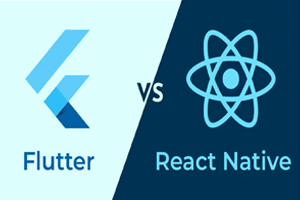Introduction
If you’re interested in building sleek mobile apps, there are a couple of technological options to choose from, particularly when you’re interested in having only a single codebase for your project. Facebook’s React Native, the younger sibling of React, is one such framework. Flutter, a framework developed and supported by Google, whereas React Native is one such framework developed by Facebook.
Differentiate: Flutter and React Native
When it comes to cross-platform mobile application development technology trends, both React Native and Flutter are pretty similar in terms of popularity, and both are still quite young. React has a bigger community but given Flutter’s rate of growth, it’s safe to say that it will catch up to React Native very soon.
When I started working in mobile development, React Native offered a much smoother learning curve than Flutter. But that was mostly because it uses JavaScript and React approach, which had been already familiar to me. On the other hand, Flutter uses Dart, an object-oriented programming language that supports static typing and supports a syntax that is quite different from JavaScript.
Technical Architecture
When choosing a cross-platform mobile app development framework, it’s essential to consider its technical architecture. By knowing the internals of the framework, we can make an informed decision and choose the one that is better for our project.
- React Native architecture heavily relies on JS runtime environment architecture, also known as JavaScript bridge. It uses the Flux architecture from Facebook.
- Flutter uses the Dart framework which has the inbuilt components. Dart has many frameworks, like Material Design and Cupertino, packed inside which provide all the required.
UI Component and Development API
When developing mobile apps, support for the native component. The app won’t feel like a native app. It’s very important that the framework has an API to access.
- The core RN provides just UI rendering and device access APIs. React Native is dependent on third-party libraries.
- Flutter framework is bundled with UI rendering components, device API access, navigation, testing, stateful management, and loads of libraries. Flutter has widgets for Material Design and Cupertino that allow developers to easily render the UI.
jQuery presents a tree-like structure of all the elements on a webpage simplifying the syntax and further manipulating such elements. The jQuery Certification exam by StudySection will secure your fundamental knowledge and a basic understanding of jQuery as an asset to improve your skills.




